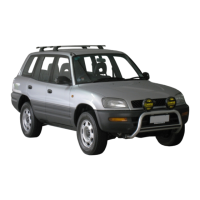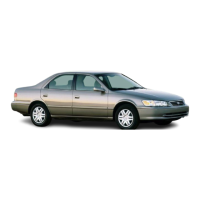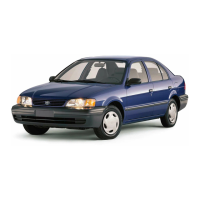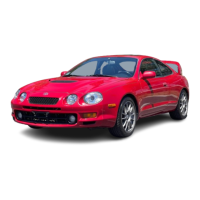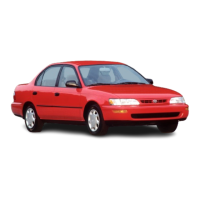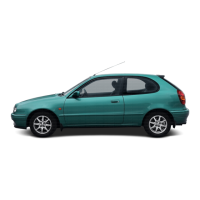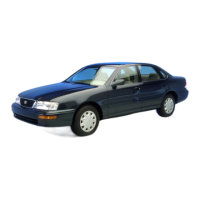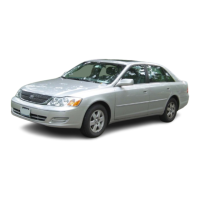37
The SRS airbags are not designed to
inflate if the vehicle is subjected to a
side or rear impact, if it rolls over, or if
it is involved in a low-speed frontal
collision.
The SRS airbag system mainly consists
of the following components and their
locations are shown in the illustration.
1. Steering wheel pad (airbag and inflat-
or)
2. Airbag sensor assembly.
3. SRS airbag warning light.
4. Passenger airbag module (airbag and
inflator)
The airbag sensor assembly consists of a
safing sensor and airbag sensor.
In a severe frontal impact, sensors detect
deceleration and the system triggers the
airbag inflators. Then a chemical reaction
in the inflators momentarily fills the air-
bags with non-toxic nitrogen gas to help
restrain the forward motion of the occu-
pants.
When the airbags inflate, they produce a
fairly loud noise and release some smoke
along with the nitrogen gas. This is not
harmful and does not indicate a fire. Be
sure to wash off any residue as soon as
possible to prevent minor skin irritation.
Deployment of the airbags happen in a
fraction of a second, so the airbags must
inflate with considerable force. While the
system is designed to reduce serious inju-
ries, it may also cause minor burns or
abrasions and swellings.
Parts of the airbag module (steering
wheel hub, dashboard) may be hot for
several minutes, but the airbags them-
selves will not be hot. The airbags are de-
signed to inflate only once.
A crash severe enough to inflate the air-
bags may break the windshield as the ve-
hicle buckles. In vehicles with a passen-
ger airbag the windshield may also be
damaged by absorbing some of the force
of the inflating airbag.
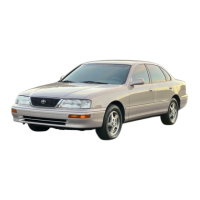
